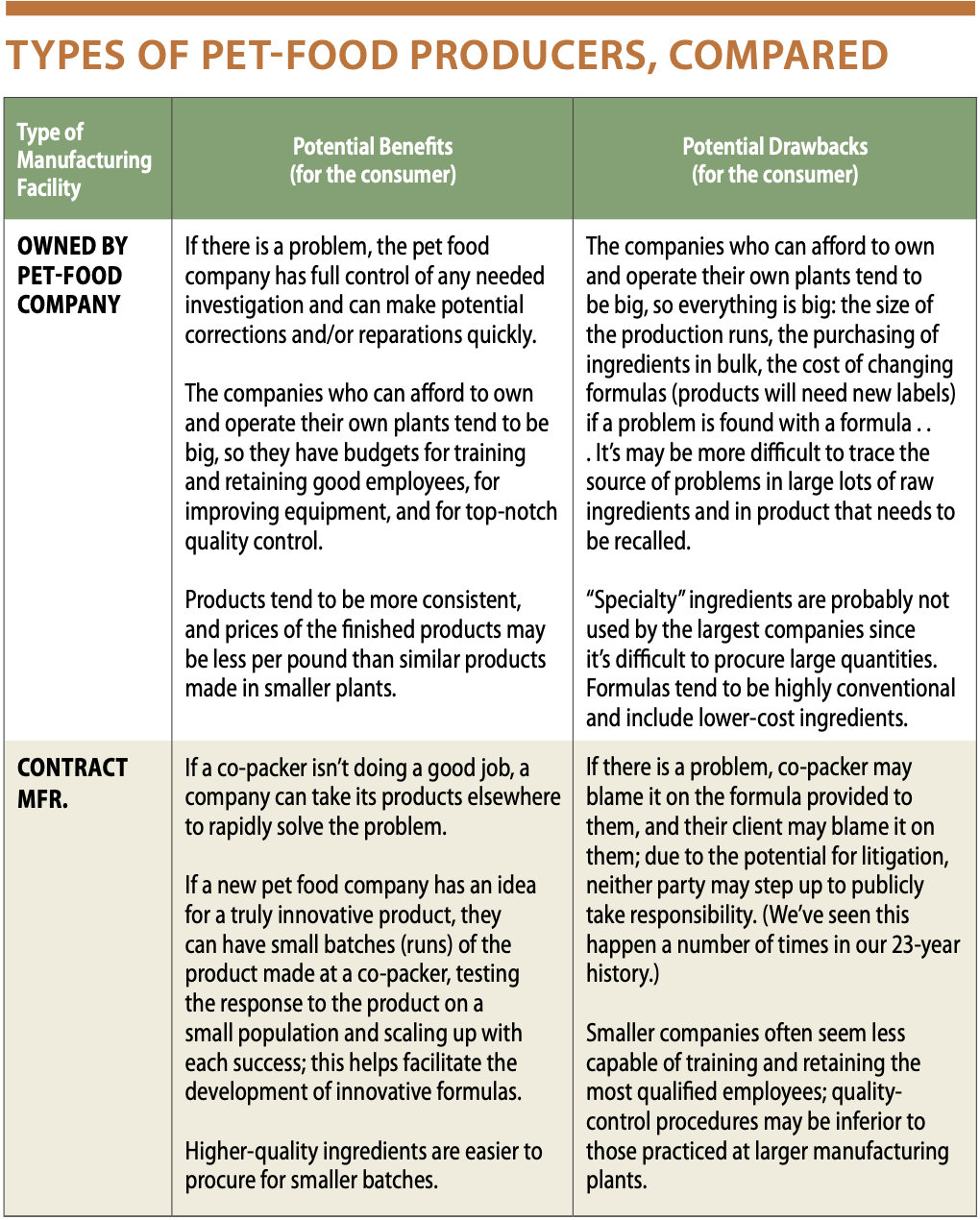
Many of you are already aware that some pet food companies own and operate their own manufacturing facilities and some of them do not. You may have already learned that some brands of pet foods are made in several different manufacturing plants in different parts of the country. Some of you are familiar with the interchangeable terms co-manufacturer, co-packer, and contract manufacturer, which refer to a company that makes products for a number of other companies.
(Funny fact: Some of us know a ton about these pet food production facilities, and absolutely nothing about the ownership or management of the manufacturing sites where our own food is produced. Take from that what you will.)
We’re often asked: Which of these situations is better? Is a pet food made in a plant that is owned and operated by the same company whose name is on the label better than products made by a co-packer?
The answer, like so many things having to do with pet food, is not so cut and dry; there are definite advantages and disadvantages of either situation. While it’s interesting (and sometimes advantageous) to know where a particular product is made, we wouldn’t base our selection of a product based solely on the information – unless we were aware that a product was made at a facility that had been cited for a number of health violations. In that case, we wouldn’t care who owned or operated the facility; we’d just avoid any products that originated there.
HISTORY
When WDJ was first published in 1998, it was virtually impossible to find out anything about pet food manufacturing sites. It took years of asking companies to share information about their production facilities before we made any inroads. The approach that finally levered this information out of a few makers of high-end dog foods? “You say you have nothing to hide and that your manufacturing facilities are the best – so, prove it!”
A few companies finally decided they had nothing to lose and everything to gain. Most of the companies that disclosed information about their manufacturing sites, or went so far as to invite us to tour those facilities, were relatively new to the market – and all of them were competing in the most expensive strata of products that are variously called natural, holistic, and/or super-premium.
When the word got out that we had toured a number of dog-food plants and didn’t print any photos secretly taken with a camera hidden in our coat buttons or publish detailed accounts of our visits, we received more invitations. To date, we’ve toured more than a dozen dry dog-food plants, three canned-food facilities, two human-food plants that manufacture truly – legally! – human-grade dehydrated diets for dogs, and a handful of raw-food and freeze-dried dog-food manufacturing plants. About half of the facilities we’ve seen were co-packers.
VALUE OF AWARENESS
Our conclusion about “which is better, self-made, or co-packed?” after seeing all these manufacturing facilities? It depends! The largest self-owned and self-managed facilities tend to have the best quality control and consistent products; they also tend to use less-expensive ingredients and highly conventional formulas. Some of the nicest-looking and -smelling ingredients we’ve seen have been getting cooked up at co-packing facilities – some of which were small, old, and not nearly as clean as the bigger plants we’ve seen.
As so many things having to do with pet food are concerned, it’s incumbent on you to find out what sort of manufacturing facility makes your dog’s food – call the company and ask! – and to take responsibility for your choice. (It’s informative even if the company won’t say where its products are made, if you get our drift.) At the very least, if you know where your dog’s food is made, and a recall of that brand is announced, you will be a step ahead in knowing whether or not you should stop feeding the food.





